
The Three Kingdoms was an era of Chinese history that lasted from 184 CE to 280 CE, starting with the Yellow Turban Rebellion and ending with the Conquest of Wu. The "three kingdoms" were Cao Wei, Shu Han, and Eastern Wu, which were formed after the fall of the Han dynasty in 220 CE; from 184 to 220 CE, the era saw warlords scrap over territory and fight for the favor of the Han emperor. From 220 to 280, the three kingdoms fought one another, with Shu and Wu usually allying to fight against the powerful Wei. In 263 CE, Wei conquered Shu, but the powerful Wei general Sima Zhao would usurp power and found the Western Jin dynasty. The Jin conquered a weak Wu in 280, uniting China under the Jin dynasty. Unfortunately, the War of the Eight Princes would tear Jin apart in the 4th century and lead to the barbarians conquering China.
History
Rebellions

The first major revolt against the Later Han rule in the 2nd century was the Yellow Turban Rebellion. Great Teacher Zhang Jiao was opposed to the corruption and poverty of the Han, and told all who would follow him to wrap yellow scarves around their heads. 2,000,000 Chinese peasants took up arms and wore these Yellow Turbans. They were comparable to bandits, raiding villages and cities. In 180 AD, Yuan Shao, a warlord from Ji Province, crushed the Yellow Turbans in Ji Province, and the Nanman people of the region of Nan Zhong denounced the Yellow Turbans when they tried to spread their ways south. The Yellow Turban Campaign officially began in 184 AD, with He Jin, Zhu Jun, Cao Cao, and Huangfu Song leading the Imperial Army, Sun Jian the Subjugation Force, and Liu Yan and Liu Bei the Volunteer Forces. These troops won at Xiapi, He Nan Yin, and Ju Lu, plus many other battles. The Yellow Turban leader Zhang Jiao's death in the winter ended the Yellow Turban Rebellion's main phase, although the Yellow Turbans continued fighting until the early 3rd century.
The next revolt occurred in 182 AD, with Ma Teng and Han Sui leading a Coalition against Dong Zhuo, Governor of Liang Province. The Coalition forces defeated Dong Zhuo's Forces at the Battle of Liang Province, although in 185 AD, with the aid of Sun Jian, Dong Zhuo subdued the Xi Liang yokels once more. Two years later, Sun Jian also subdued Ou Xing's uprising in Changsha.
The Alliance against Dong Zhuo
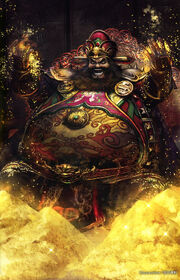
Meanwhile, the Ten Eunuchs took power in the Imperial Court, with Zhang Rong at the helm. The Imperial Court was corrupted, and soon, Yuan Shao and Dong Zhuo attempted to kill them. In 188 AD, the Ten Eunuchs and He Jin were slaughtered in a bloodbath in Luoyang. Dong Zhuo seized authority in the court in their place as a brutal dictator, and it was not long before Yuan Shao formed an alliance against him. In 189 AD, Cao Cao failed to assassinate Dong Zhuo in Luoyang in the palace, and barely escaped.
In 190 AD, Yuan Shao's coalition was joined by Liu Bei, Sun Jian, Gongsun Zan, Liu Yan, Bao Xin, Yuan Shu, Kong Rong, and many others, and the land's finest warriors gathered to fight Dong Zhuo's villainy. The Alliance defeated Dong Zhuo at Hu Lao Gate in 191 AD after winning at Sishui Gate. Dong Zhuo razed Luoyang as he fled the capital city, and brought the emperor with him. Sun Jian found the Imperial Seal in a well, and gave it to Yuan Shu in exchange for an alliance. He was made Inspctor of Yuzhou. When the alliance broke up, the warlords and remnants of Dong Zhuo's army fought each other. Even Yellow Turbans joined in the turbulence of the 190s AD. By 200 AD, the only warlords still standing were Cao Cao, Yuan Shao, Sun Ce, Liu Biao, Liu Zhang, Ma Teng, Han Sui, Zhang Lu, Meng Huo, Gongsun Yuan, and Huang Zu. Sun Ce conquered the Wu Territory in Yang Province, founding the kingdom of Wu, Liu Biao held onto Jing, Liu Zhang had Yi Province, Han Sui and Ma Teng shared power in Liangzhou, Zhang Lu had lands in Hanzhong, Meng Huo was king of the Nanman tribe, Gongsun Yuan was the Governor of Qing Province, Yuan Shao controlled Northern China and the Central Plains, Huang Zu was also based in Jingzhou, and Cao Cao had Yu Province.
Power Struggles
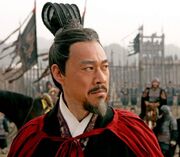
Cao Cao at his camp at Jiangling, on the eve of the Battle of Chi Bi, 208 AD
At the Battle of Guandu in 200 AD, Cao Cao's army of 20,000 troops defeated Yuan Shao's army of 100,000. His army defeated the Yuan Shao Army by destroying their supply depot, starving their foe before whittling them down to nothing. In Yuan Shao's army was Liu Bei, who had fled Xu Province after a failed rebellion and, along with his brother Zhang Fei, was separated by his brother Guan Yu when Cao Cao captured Guan Yu and took him into his service. Guan Yu had to cut his way through five gates to escape to his brothers, who awaited in Hefei. Meanwhile, Sun Ce was killed in battle trying to attack Cao Cao's base of Xu Chang in an attempt to free Emperor Liu Xie of Han.
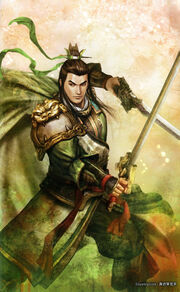
Cao Cao spent the first decade of the 200s hunting down the remnants of Yuan Shao's Army, the Yellow Turbans, and the Qiang barbarian tribes. He won at Ji Province in 202, Hebei in 204, and White Wolf Mountain in 207. At the same time, Liu Bei was fleeing Cao Cao, and managed to shake off his pursuers at Ru Nan in 200, Xin Ye in 204, Bo Wan Po in 208, and Chang Ban, also in 208. Sun Quan, Sun Ce's successor, was idle, and some considered him a coward. However, Liu Bei allied with Sun Quan in 208, fearing that after Chang Ban, he might be caught and killed in the next battle. Liu Bei and Sun Quan's fleet, led by Zhou Yu and Zhuge Liang, devastated the Wei armada with a fire attack that let 50,000 Allied troops beat 800,000 of Cao Cao's troops. In the aftermath of Chibi, Liu Bei occupied Xiangyang, Lingling, Wuling, Guiyang, and Changsha, while Sun Quan captured the Nan Territory, Jing Province, and Jiangling. In this campaign, Zhou Yu was pierced by an arrow and died of wounds a year later in 210 AD. By this time, Liu Bei and Sun Quan had started fighting over the borders of Jing Province, and the marriage of Sun Shang Xiang to Liu Bei temporarily put the borders back to the status quo.
The Three Kingdoms
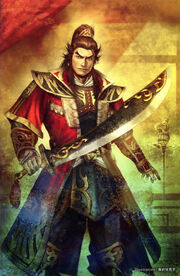
In 211 AD, Cao Cao focused on building his empire in the north instead of risking another defeat at the hands of Liu Bei or Sun Quan. In a campaign against the rebellious warlords of Liang Province, Cao Cao defeated Ma Chao's army at the Battle of Tong Gate, where he won due to the defection of Han Sui, who still considered Cao Cao a friend of his. This victory pushed Cao Cao's dominance to the far northwest corner of Liang Province, and in 214 AD, Cao Cao defeated Zhang Lu's army at the Battle of Yang Ping Gate, seizing control of Hanzhong.
In 214 AD, as Wu attacked Hefei, Liu Bei invaded the lands of Shu in Yi Province, led by Liu Zhang. Liu Bei was originally planning to aid Liu Zhang, a fellow family member, against Zhang Lu and Cao Cao, but his generals Pang Tong, Huang Zhong, and Wei Yan seized Luo Castle without his permission, thinking that it was for his own good. Liu Bei's army captured Chengdu in revenge for the death of Pang Tong in the Battle of Fallen Phoenix Hill, and Liu Bei founded the Kingdom of Shu.
Meanwhile, Wu was making small progress. They attacked Hefei and inflicted heavy losses on Wei, but were unable to gain any new territory. But the result was a small period of peace between the kingdoms, and Sun Quan's general Lu Xun used this to their advantage to subdue the Nanman tribes of the south, securing their southern borders temporarily. Now, with only Cao Cao, Liu Bei, and Sun Quan remaining, the Three Kingdoms were founded.
Wars of the Three Kingdoms

Emperor Cao Pi
In 218 AD, contacting Wu for an invasion of Hefei once more, Liu Bei invaded Hanzhong with new generals Huang Zhong, Wei Yan, and Ma Chao in the van. He conquered the region after killing Cao Cao's cousin Xiahou Yuan at the Battle of Mt. Dingjun, although he lost Lei Tong in the process. Wu won at Ru Xu Kou in 218 AD, and Wei lost Yue Jin to Gan Ning. However, tension arose when Guan Yu refused to leave Jing Province as Liu Bei promised, as per Zhuge Liang's instructions. Wu allied with Wei and Guan Yu was killed in the Battle of Fan Castle. An enraged Liu Bei invaded Wu in 222 AD, but at the Battle of Yi Ling, a fire attack destroyed his 100,000-strong army.
While Wu and Shu fought, Cao Cao died in Xuchang in 220 AD. His son Cao Pi declared full independence from the Han after overthrowing Emperor Liu Xie of Han and declaring himself "Emperor of Wei", the first Three Kingdoms ruler to acknowledge his own independence. When Liu Bei was defeated at Yi Ling, he became sick and powerless, so his strategist Zhuge Liang took over as regent. Zhuge Liang allied with Wu against Wei, despite the deaths of Guan Yu, Zhang Fei, Ma Liang, and Huang Zhong at the hands of Wu, and Cao Pi invaded Wu in response. He was bested at Dongkou, Ruxukou, and Jiangling, and retreated. He died in 226 AD.
After the death of Cao Pi, Zhuge Liang launched his Northern Expeditions against Wei, with Liu Shan (emperor since Liu Bei's death in 223 AD) permitting his wars. In 227 AD, in his first campaign, Zhuge Liang gained Jiang Wei as an officer after defeating Wei at the Battle of Tian Shui. With Jiang Wei at his side, he fought many campaigns north after the first one, but failed to gain any grounds, as Wei general Sima Yi was able to defeat him at Jieting and Chencang, while losing at Mt. Qi. In 234 AD, in the final battle at Wuzhang Plains, Zhuge Liang died of natural causes, and the Shu army, without a talented leader, were defeated by the Wei. Consequently, a Wu attack on He Fei was beaten off by Cao Rui, and a Wu attack on Shu failed at Bai Di Castle.
Fall of the Three Kingdoms
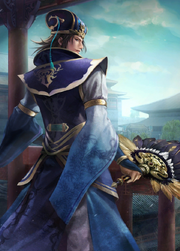
After Wuzhang and Zhuge Liang's death, Shu went into decline. Jiang Wei, now Prime Minister, launched several Northern Expeditions against Wei, who were also declining; Sima Yi murdered regent Cao Shuang in 249 AD and took over, as power shifted from the Cao to Sima clans. Wu assisted various uprisings in Wei, such as that of Wang Ling, Guanqiu Jian, Wen Qin, and Zhuge Dan, but they suffered from corruption and civil war; Zhuge Ke, a relative of Zhuge Liang, was killed along with his whole family after a failed invasion of Wei in 253 AD as Sun Jun took over power. Wei crushed each rebellion, while Jiang Wei won as many battles as he lost, draining Shu's troops and supplies.
In 258 AD, after having crushed the rebellion of his strategist Zhuge Dan, regent Sima Zhao focused on Shu. He defeated a Shu army at the Battle of Tao River and the Battle of Duan Gu, and in 262 AD, the former Wei general Xiahou Ba (son of Xiahou Yuan) was killed leading Shu troops in the Battle of Taoyang in an ambush.

A year leader, Sima Zhao and his generals planned the conquest of Shu Han. Generals Deng Ai, Zhong Hui, and Jia Chong were the main leaders of the attack, with over 100,000 Wei troops assembling in the recently-captured Han Zhong. The Wei Army invaded Yi Province, facing little resistance in the rural areas. The real showdown came at Chengdu, where the last of Shu's officers were killed or surrendered, mainly the former. Liu Shan surrendered and Shu was occupied by Wei; all resistance was crushed when Jiang Wei and Zhong Hui were slain in a failed rebellion in 264 AD. That year, Sima Zhao died, and his son Sima Yan created the Jin Empire.
Unification
Sima Yan attempted a series of invasions of Wu in the later 260s that were beaten off by the cautious general Lu Kang, son of General Lu Xun. His generals Wen Yang, Jia Chong, and Du Yu eventually invaded Wu in 279 AD, seven years after the death of Lu Kang. The Jin forces defeated the Wu fleet in a showdown at Chi Bi, where seventy-two years earlier, the Wei had been defeated by Wu and Liu Bei. After this battle, Jian Ye, the Wu capital, was occupied. In 280 AD, Wu fell, and the Three Kingdoms were united by Jin.
Aftermath
The Jin lasted only until 316 AD, when the western Jin were conquered by barbarians. The Eastern Jin defeated the Former Qin at the Battle of Fei River, but they were divided into the Thirteen Kingdoms. Only in the 6th century was the land united under the Sui Empire, and in 618 AD, with the advent of the Tang Empire, China reached a golden age. Eventually, the dreams of the Chinese were shattered when the Mongols of Kublai Khan invaded China in 1260 AD, and in 1279 AD, China fell under Mongol hegemony; only in 1388, with the Red Turban Rebellion's conclusion, did China see Chinese rule once more.
